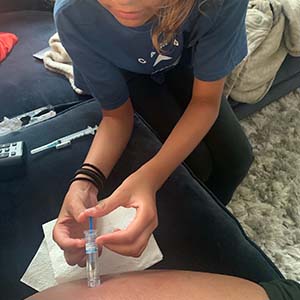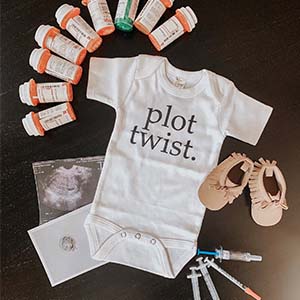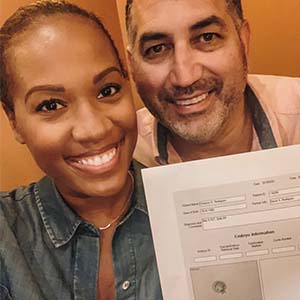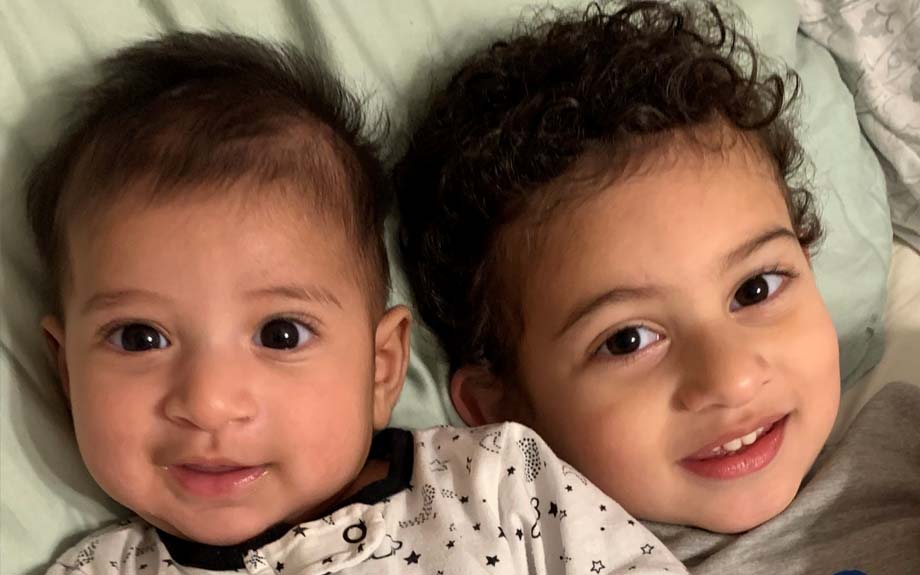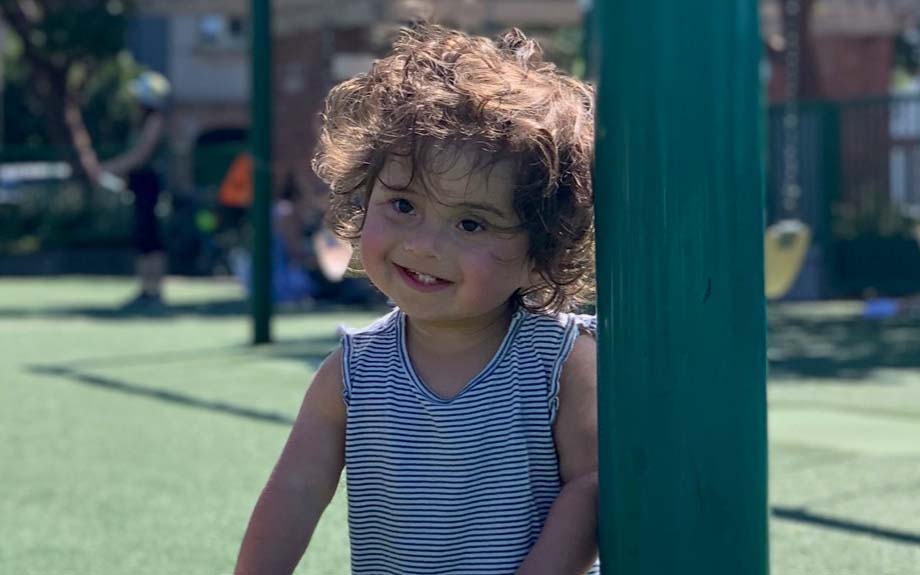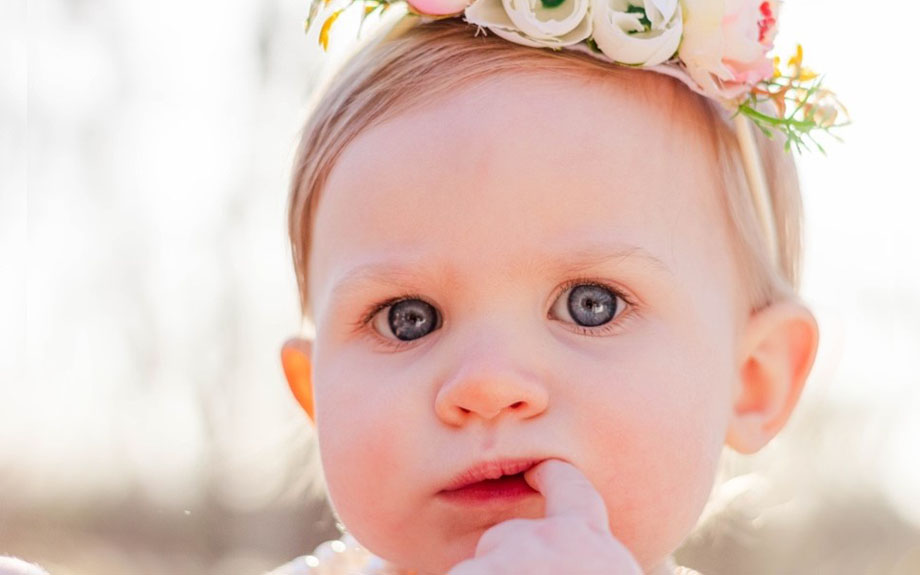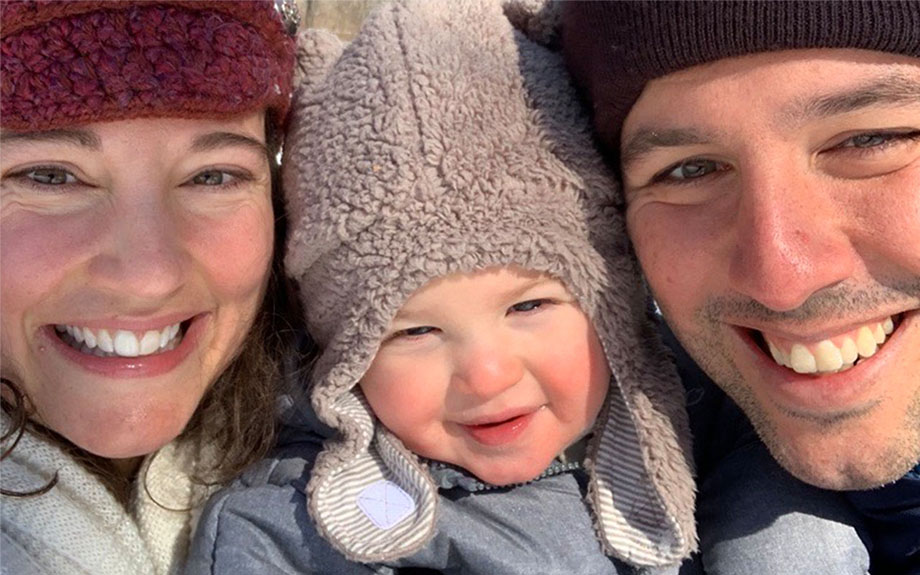Did you know that mosaicism isn’t a new phenomenon – it was first discovered over 90 years ago1 ! Detecting mosaicism is “new” to ART (Assisted Reproductive Technology) because Preimplantation Genetic Testing (PGT) using NGS or Next Generation Sequencing, (introduced to ART in 2014) enabled us to detect mosaicism in embryo biopsies. We were able to see things that we knew were already there which we couldn’t before. Using artificial intelligence, we have continuously updated our technology to detect mosaicism, even at low levels. However, outcomes from mosaic embryo transfer are still being researched.
Read more about Christina, a blogger from Georgia, USA, and her unique journey to parenthood, including blended families, secondary infertility, and the mosaic embryo transfer that led to her daughter, Emilia.
Christina’s Story
Before our IVF journey to have Emilia, I had been an egg donor five times, so I saw firsthand how couples can struggle with infertility. During my first marriage I had two children, both conceived naturally. Having been an egg donor and with two children already, I was hopeful when I remarried that having children would be easy. My husband David and I decided to grow our family however his being older meant we needed more testing. He’d also had a vasectomy previously, which influenced our decision to find out more about IVF.
Once we started on the path to IVF, we learned I had endometriosis and adenomyosis. I had known I had PCOS already, but this was unexpected and these results meant I had to change my headspace. Initially we looked into IVF because of my husband, but after learning more about my endometriosis, and discovering blocked tubes, IVF made sense for us.
We live in Georgia, and traveled to CNY Fertility in New York for my IVF cycles. I did all testing locally but made trips for the retrieval and then transfers. We chose to be open with our children about what was going on as we would be heading to lots of appointments in New York. The retrieval itself ended up being hard on my body, my estrogen was through the roof and I developed severe OHSS. We had no choice but to move forward with a frozen embryo transfer so my body could heal.
While I was resting at home, my husband and I discussed genetic testing.
“I felt that although it may cost more, we would have a better understanding of the quality of our embryos and the likelihood that a transfer would lead to a successful pregnancy.”
We decided to test some of our embryos. The results of our genetic testing revealed we had three euploid embryos (two were morphologically low-quality) and a low-level mosaic embryo.
After I had recovered, we made the trip back to New York where we decided to transfer the good quality euploid embryo. We were all so optimistic. As I had gotten pregnant twice previously, I fully believed this first IVF transfer was “the one”. It wasn’t. We were devastated. This failed transfer hurt on so many levels.
It was a very confusing time for our family.
Although two of our remaining embryos were euploid, we knew they were morphologically low-grade embryos. We decided to test the additional three embryos we had cryopreserved. Sadly, these arrested in development, and this brought on another sense of loss and letdown because we couldn’t use them. I wasn’t sure at this point if we were even meant to have another child.
I knew we had a good quality ‘low-level mosaic’ from our first round of genetic testing and that this could be a transfer option. I decided to start scouring all online forums, researching mosaicism and the chromosome which was affected in our embryo (a loss of part of the Q-arm on chromosome 9). I wanted to see if there were cases where a similar embryo was transferred, how children born looked, and what their lives were like.
I was open with my decision-making and exposed myself to a lot of opinions which was tough. I wish that I could say that there was some scientific reason that we decided to try that embryo over the two morphologically low-grade euploid embryos. Honestly, we did a lot of praying and we were prepared that it might work, and it might not.
“We tried to look at it from a positive angle and saw the transfer of our mosaic embryo as a bonus to help modern science as mosaic embryo transfer is still very new!”
We chose to go ahead with the transfer of the low-level mosaic embryo. We were considered a high-risk pregnancy, so I had a Maternal-Fetal Medicine specialist the entire pregnancy. I was quite surprised about how little the specialist knew about transfer of mosaic embryos, and it left me feeling isolated. In most instances I was the one providing her with info and medical literature instead of the other way around.
As the pregnancy progressed further, we had a CVS, or chorionic villus sampling, and an amniocentesis. Everything regarding the baby looked normal despite my complicated pregnancy..
At exactly 36 weeks we made the difficult decision to induce labor due to complications. Labor was stressful! Our baby’s heart rate dropped significantly, and the labor and delivery team began preparing me for a C-section. Very suddenly, I had dilated to 9-centimeters, had a placental abruption but Emilia had arrived!
Emilia was very small and was having trouble breathing while I was hemorrhaging. I sent my husband with her while the doctors and my mom stayed with me to ensure my vitals were ok. I had some complications to recover from but our much-wanted little girl had finally arrived.
“Without transferring my mosaic embryo, I wouldn’t have Emilia.”.
I know many people will have questions, but at the end of the day I can simply share our experience and explain that no decision was made lightly; we made many considerations before going forward with our choice. I would say that the whole process has been amazing despite the challenges, especially the insight we gained through the genetic testing that was done.
“These kinds of tests give people the opportunity to make an informed choice.”
I feel that it is easy to assume why a couple or individual may have chosen IVF, but you never know the full story. The journey to parenthood looks different for so many people and usually isn’t a simple one.
My story is a bit different to most, it includes secondary infertility, a second marriage, and then of course a mosaic embryo! I do also feel that sharing my story of infertility will help other women within my own African American Community. It is important to have representation in the IVF space for all communities and quite frankly it’s something we still really need to work on.
“It’s nice to know that I and my family have, in a larger sense, contributed to our understanding of mosaic embryos which might help more people create families.”
Reference
1 Sturtevant, AH. The claret mutant type of Drosophila simulans: a study of chromosome elimination and cell-lineage. Zeitschrift für Wissenschaftliche Zoologie 1929;135:323–356.


